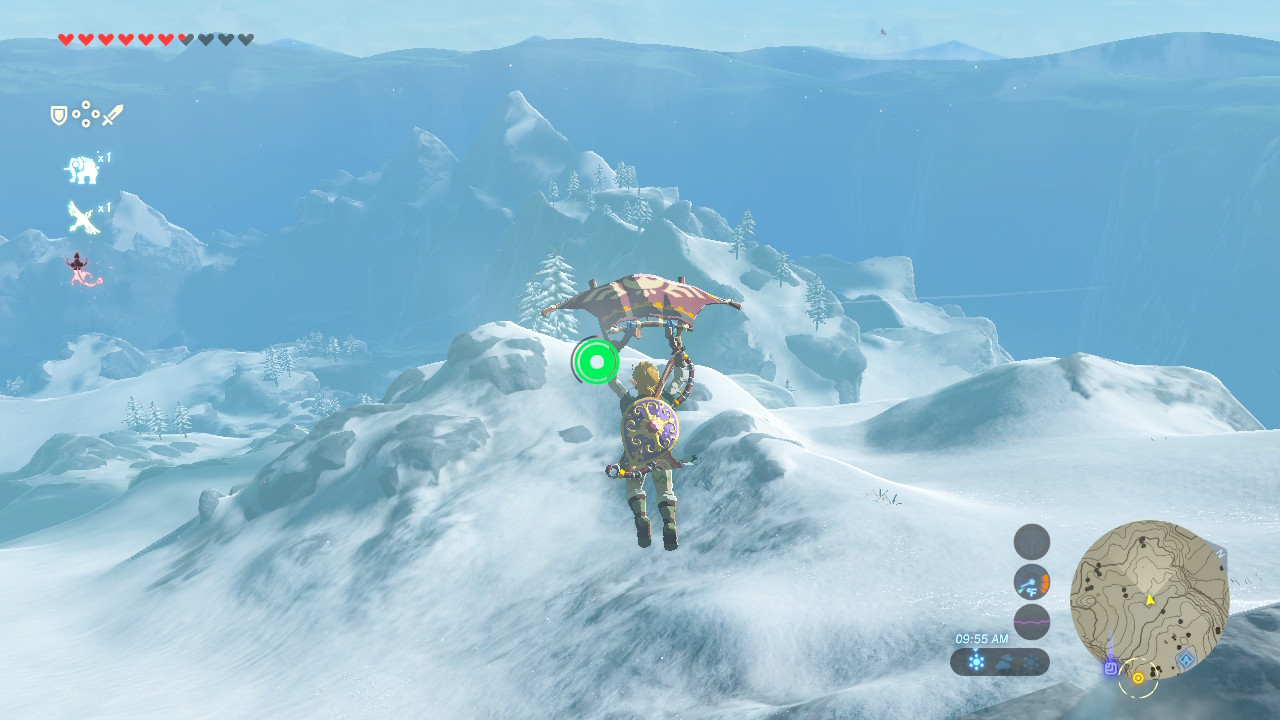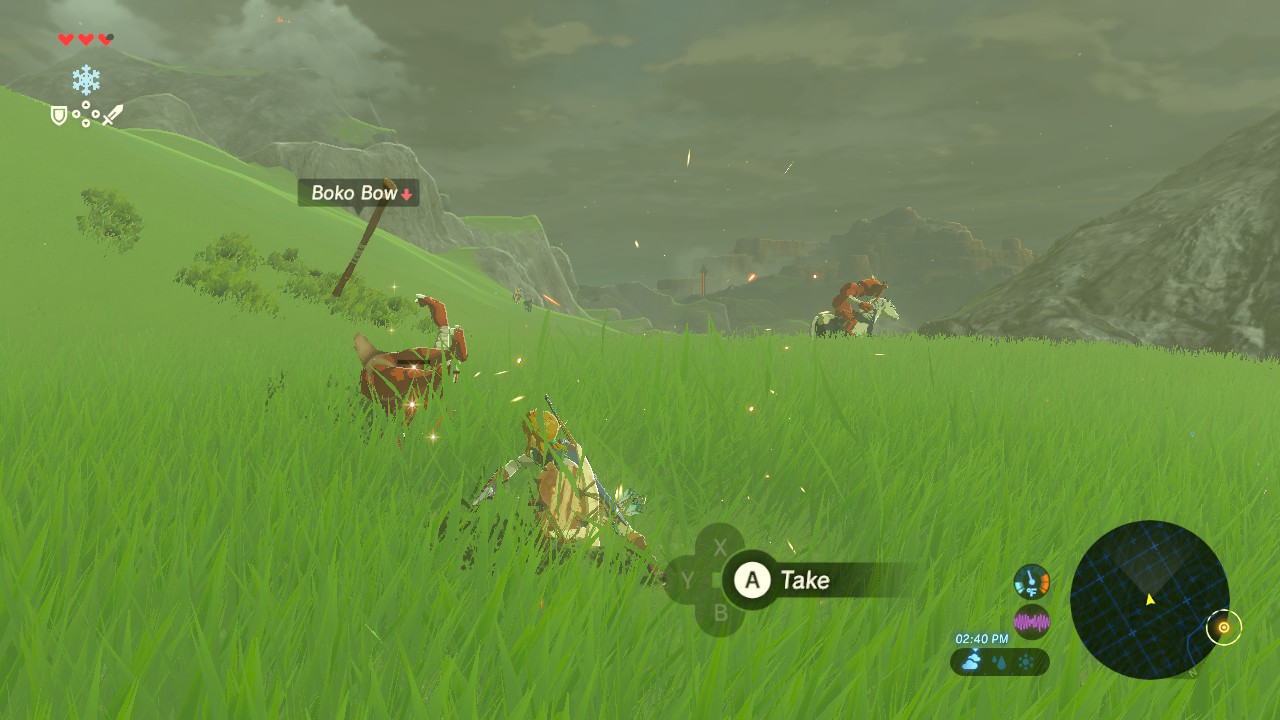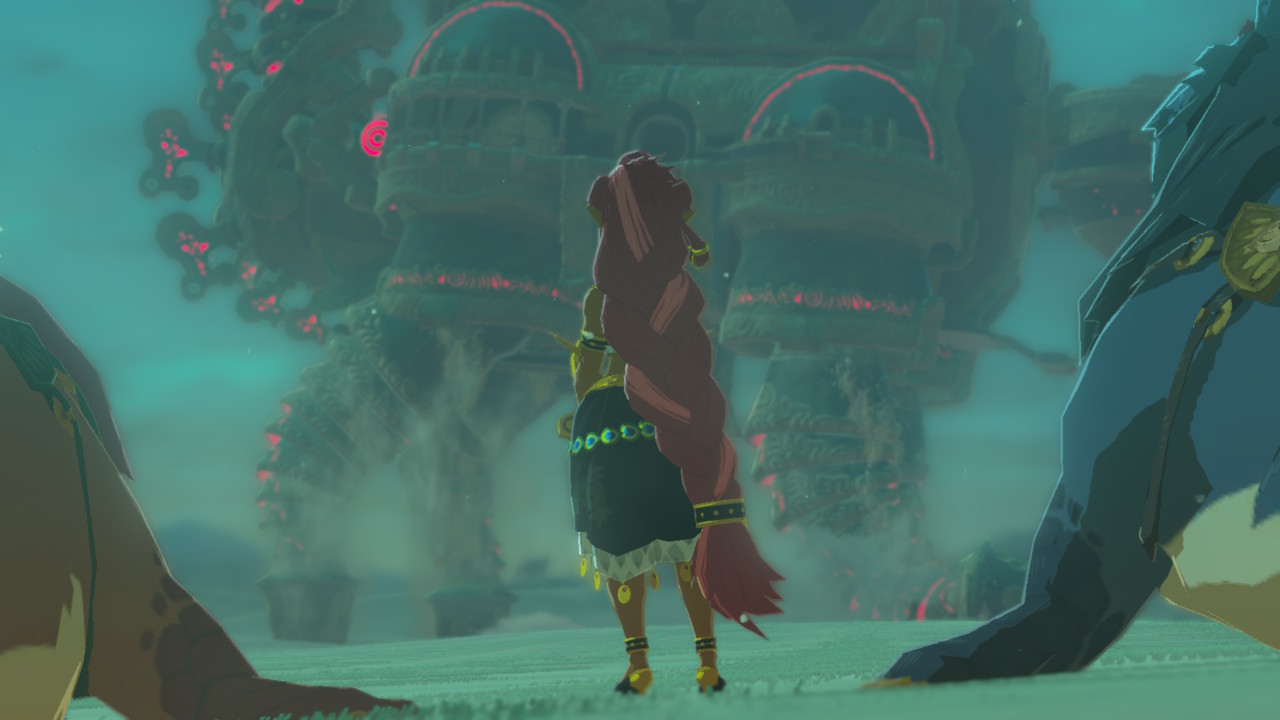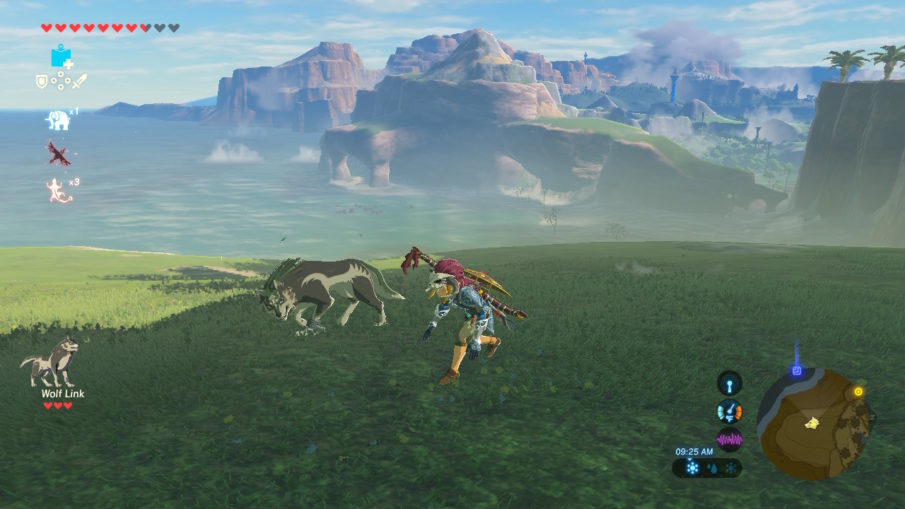Switch •
With a daughter turning nine in March, I had an excuse to pre-order a Switch and the new Zelda. The one-sentence review I would give of it is this: it’ll make you feel like a kid again, until you watch kids play. If I could add another sentence, I’d note that I’m only writing about it because I promised my kids I wouldn’t do the thing I just started doing in the game until they could watch me, and they’re in school. As I have now been gifted with an unsought opportunity to reflect, I’m going to make the most of it to try and excuse playing Zelda to the exclusion of writing for you wonderful people for weeks. It was “research” for this piece.
In trying to develop a vocabulary to capture what makes Breath of the Wild unique, I first considered how it compares to its closest familiar cousins, the open-world genre of Assassin’s Creed, Far Cry, and so forth. But I also had this recent Slate Star Codex piece which introduced me to the idea of High Modernism in architecture on my mind, which made me think about a video game’s world as a built environment. I recall reading, of Far Cry 3, that what made it special wasn’t the game’s story, but the little emergent interactions of various largely random systems. Sure, there was the game’s system of clearly-signposted official activities with pre-determined rewards, but along the way you might simply tool around and see what happened when, for example, you tried to run down a komodo dragon with a jeep (in my case, you hit a tree, then ran like hell from a wicked pissed-off vicious lizard).

Part of what made those interactions so interesting was that they felt authentic–that komodo dragon wasn’t placed there so you could tick a box in a quest, it was algorithmically determined without attention to the specific opportunities it afforded in that exact spot. But these little moments were also interesting simply because they were brief and self-contained, and so plentiful that it simply wasn’t possible to experience them all. So even the most obsessive players couldn’t hold themselves to a standard of seeing everything, and the rest of us never had to feel inadequately thrifty for choosing not to pursue that goal and get the most out of our game purchase. But that wasn’t the only virtue of these interactions. They were also a step away from the pacing and magnitude of the story missions, which were designed with specific assumptions about how much gameplay players wanted out of a mission and which directed the player thoroughly enough to ensure that action came when and in the amounts that designers intended.
Consider the difference between reading a book and reading Wikipedia. With a book, you know ahead of time about how much there is to be read, and you have some expectation that it’ll hang together in certain ways. With Wikipedia, you start reading about trail design (maybe because you’re trying to figure out how deliberately the experiences you’ve had in national parks can have been planned, as an analogy you were thinking about using in an article about designing a fake landscape to make such experiences possible), then you click on a word you’ve never seen: viewshed, which leads you to viewshed analysis, and suddenly you’re on Mars. Along the way you might poke your head into articles on corpse roads and Frederick Law Olmstead (designer of numerous city parks, including New York’s Central Park). [Holy crap, even Kelsey’s diversions are way too intelligent for me to comprehend -ed.] Though you know perfectly well that someone else or many someones wrote those articles and placed those links there for you to follow, no one laid out the path or determined how long you’d walk it. So you are free of the burden of knowledge that whatever unexpected thing happens next was intended to be unexpected in just that way, and you may flit from one distraction to another as suits your fancy.

Put another way, Zelda’s not a sandbox like Minecraft, nor an obstacle course like most games–it’s a playground. Virtually everything in it is carefully designed to appeal to at least some of the people some of the time, but you choose what to play with, in what way, and how much to explore. I find the freedom of a true sandbox game paralytic, and I generally either tire of it quickly or impose on myself some greater goal, with numerous sub-goals to direct my play. When free of the cage of a highly prescriptive game structure, my highest aspiration is to build a new cage. In Zelda, finally, I’ve found a reminder that sometimes I can simply poke at stuff and see what happens. Those cages are the brutalist architecture of play: they aim to boldly optimize some genuinely important values, but they’re rather one-size-fits-all and deliberately force us to fit their assumptions. A slightly wild garden is a relief, and I am glad of it.
But then I watch my kids, and they’re immensely better at undirected exploration than I. They can happily cook various foods for half an hour straight, or climb every tree and tame every horse they see, while I’d be off turning orange stuff blue or mapping out a route to help me find new orange stuff. I’m not inveterately goal-directed, but the lure of a box to tick is still far stronger for me than for them. There’s much to say about Zelda other than this, but there’s little need of yet another comprehensive review. I am content merely to note that Zelda reminded me of one way children are different from adults, and I’d be most grateful for it even if it weren’t a stupendous game.



